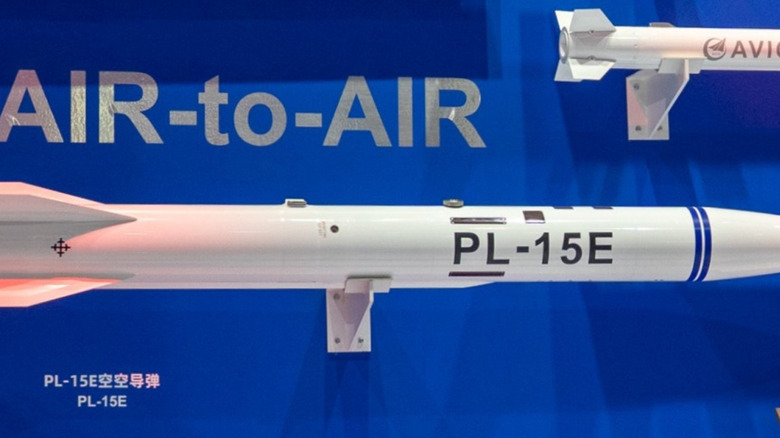The F-22 Raptor Strikes Again With The 'Longest Known' AIM-120 AMRAAM Shot
Raptor, a word for a swift and deadly bird of prey, is certainly an appropriate name for the F-22. The formidable fighter has a top speed of over Mach 2.0, with afterburners that allow it to push beyond its natural maximum pace (at the cost of considerably heavier fuel use). It's also a rare example of a jet that can supercruise. It's one of the most formidable fighters in the U.S. arsenal, but speed alone isn't enough to both defend the jet while keeping it a potent threat. A fighter jet such as the F-22 will, generally, be tasked with engaging other aircraft. The crux of its weaponry, as such, is air-to-air potency. In that regard, one of its greatest assets is the AMRAAM, or Advanced Medium-Range Air-to-Air Missile. It's the stealthiest fighter jet ever built, and to make the best use of this quality, it needs weaponry of considerable range.
In September 2025, An F-22 pilot fired what AMRAAM manufacturer Raytheon, of RTX, declared to be the longest-range AMRAAM shot ever fired. It was performed during extensive testing of the missile and its capabilities at the Eglin Air Force Base, for the force's broader form, fit, function refresh program. The exact distance of the shot is classified, as is the official range of the missile in its different variant forms more broadly. It's estimated, however, that the missile can potentially hit targets at a range of approximately 100 miles in its most recent upgraded form.
The significance of the new AMRAAM record shot
When it comes to military secrets, of course, the U.S. Air Force does not wish to disclose any specific information that potential adversaries could use against it. We don't know what this new distance record is, then, but it was the longest shot achieved by a missile of the AIM-120 AMRAAM family in over four years. On the previous occasion, in April 2021, the 28th Test and Evaluation Squadron targeted and destroyed an unfortunate BQM-167 drone, which had been designated as the target for the test.
Weapons Systems Evaluation Program East was the backdrop for the shot, an event all about pushing the capabilities of weaponry as far as possible. As such, it was not the kind of shot that the aircraft might be expected to make on a routine basis in the course of duty. Nonetheless, a potential capacity to strike at a distance of around 100 miles (the AIM-120D that struck that drone in 2021 is reportedly capable of such a range) could prove pivotal.
The AIM-120 remains a powerhouse
Raytheon's Air & Space Defense Systems president Sam Deneke boasted, "AMRAAM is already known as the gold standard for the air dominance arena, and these tests prove it will continue to play a critical role for the U.S. and its allies for decades to come." The AIM-120 AMRAAM is one of the world's premier air-to-air missiles. It was introduced to replace the aging AIM-7 Sparrow missile. One Sparrow that is currently in service, the AIM-7M, has been in use since 1982, while the AIM-120 entered service in 1991. It has a blistering top speed of approximately Mach 4, the equivalent of slightly over 3,000 mph.
The AIM-120, originally developed by Hughes, began to take shape in the mid-1970s, when it was determined that a range of up to 40 miles or so would be necessary for a weapon of its type. Today, variant models are believed to be able to strike targets at more than twice that distance, a capability that has become increasingly important in the light of other international developments. China's development of the PL-15, a sophisticated air-to-air missile propelled by a dual-pulse rocket engine with a range believed to be approximately 124 miles, is one potential advancement to watch.
Testing and improving the operational range of the AIM-120 AMRAAM, as well as ongoing work on its follow-up, the AIM-260, are some of the steps the U.S. is taking to prevent a gap in range capacity opening up. The F-22 Raptor's shot, a new record for a fifth-generation fighter, demonstrates exactly what aircraft and missile alike can still do. These efforts are certainly bearing fruit. The AMRAAM isn't the most powerful air-to-air missile ever deployed, but it continues to evolve.


